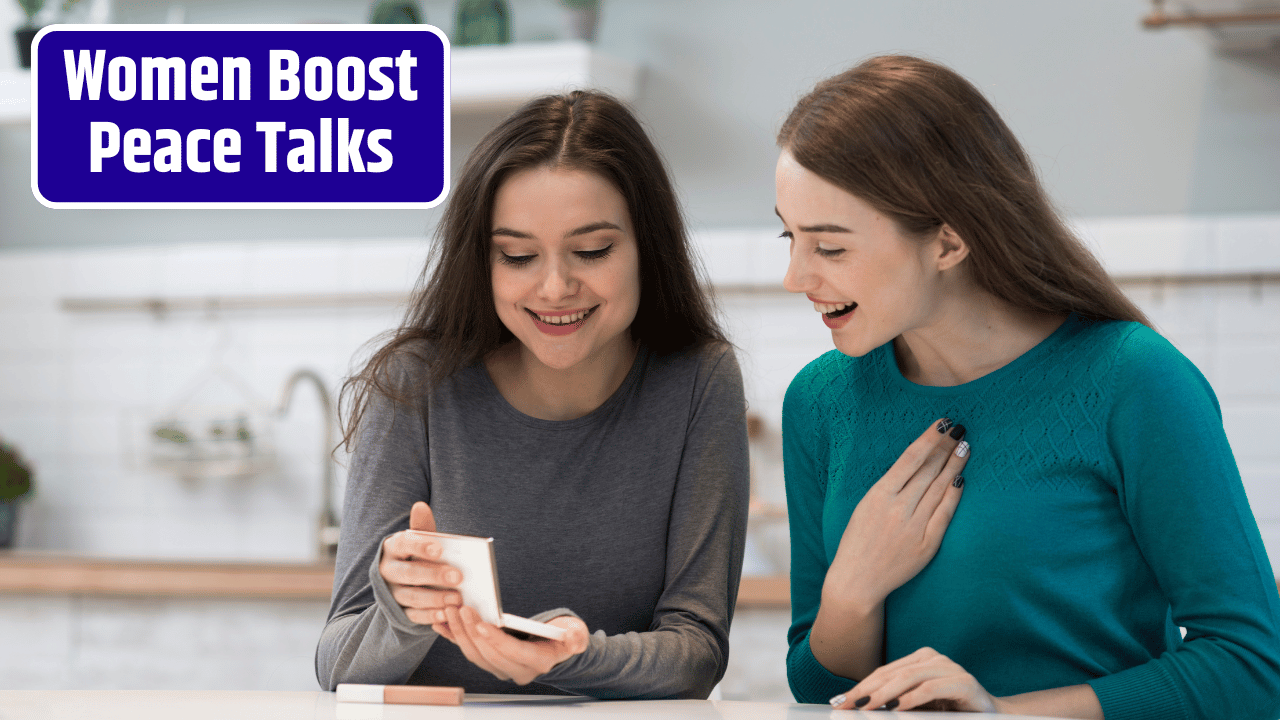Last month, a group of trailblazing women—ministers, negotiators, grassroots organizers, military vets, and yes, even former combatants—gathered quietly in Nairobi. No fanfare. No fancy hashtags. Just a shared mission: to rewrite the rules of power and peace in places where those words have long been weaponized.
They weren’t there to talk about peace. They were there to take it back.
Table of Contents
Why Women, and Why Now?
For decades, conflict resolution has looked like this: men in suits in air-conditioned rooms, sketching ceasefire lines across countries they barely understand. And guess what? Those peace deals? Over half fall apart within five years.
Meanwhile, women—who bear the brunt of war in every imaginable way—have been left out of the room. Again and again.
But data doesn’t lie. According to UN research, when women are meaningfully involved in peace processes, the agreements are 35% more likely to last at least 15 years. That’s not a feel-good stat. That’s strategy.
So yeah, the world’s finally catching up. And women leaders? They’re not waiting for invites anymore.
What This New Movement Actually Looks Like
We’re not talking about inspirational speeches and vague resolutions. This is gritty, ground-level, real-world stuff.
Let’s break it down:
| Region | Women-Led Initiatives | Impact |
|---|---|---|
| Afghanistan | Underground education networks for girls | Preserving access to knowledge under Taliban restrictions |
| Colombia | Former female FARC fighters turned peacebuilders | De-escalating rural violence through community dialogue |
| South Sudan | Women-led truth and reconciliation councils | Healing trauma and preventing cycles of revenge |
| Ukraine | Displaced women forming aid hubs across borders | Delivering essentials + advocating for peace talks |
| Syria | All-female negotiation teams in local ceasefires | Reducing civilian casualties, brokering temporary peace |
These aren’t one-off wins. They’re part of a tectonic shift. And the women leading these efforts aren’t interested in “diversity panels” or waiting for top-down orders. They’re moving sideways through the system. Grassroots up. Feminine, yes—but ferocious, too.
Redefining Power: Not Just Who Holds It, But How It’s Used
Here’s the thing: this movement isn’t just about adding women to existing power structures. It’s about tearing up the blueprint.
Traditional peace talks? Rigid. Legalistic. Often rooted in old colonial frameworks. Women-led negotiations tend to be more inclusive, emotionally attuned, and focused on the long haul—community health, education, land rights, not just disarmament and borders.
And the power these women bring? It’s not all guns and government titles. It’s influence. Trust. Emotional intelligence. A fluency in pain and persistence that only comes from living through conflict, not just reading briefing memos about it.
As Leymah Gbowee, the Nobel Peace Prize winner who helped end Liberia’s civil war, once said: “You can never leave footprints that last if you are always walking on tiptoe.”
These women are stomping forward—with bare feet, if necessary.
What’s Still in Their Way (Spoiler: A Lot)
Let’s not romanticize it. These women face roadblocks that’d make most of us curl up and quit.
- Safety threats: Women negotiators often face harassment, violence, or exile.
- Funding gaps: Women-led NGOs receive only a sliver of international aid budgets.
- Patriarchal pushback: In many regions, female leadership is still seen as “illegitimate.”
- Tokenism: Being “invited” into a process doesn’t mean being heard.
One Colombian activist put it like this: “We’re allowed in the room now. They just don’t pass the mic.”
But here’s the twist: they’re bringing their own damn microphones. And backup speakers.
So… What Happens Next?
This global women-led push for peace isn’t a moment. It’s a movement.
International institutions are slowly catching on. The UN now has a Women, Peace and Security agenda. Countries like Sweden and Canada have adopted feminist foreign policies (though implementation’s another story). But the real change? It’s bubbling from the bottom up.
Expect to see:
- More women organizing across borders using encrypted digital tools.
- Young female activists shifting narratives via TikTok and podcasts.
- Grassroots diplomacy reshaping what conflict “resolution” even means.
And maybe—just maybe—we’ll stop measuring peace in pieces of paper and start measuring it in lives rebuilt.
FAQs
Why does including women make peace deals more durable?
Women often prioritize community needs, build broader coalitions, and push for structural reforms—not just temporary ceasefires.
Isn’t this just identity politics?
Nope. It’s evidence-based strategy. Excluding half the population from peace processes isn’t just unjust—it’s dumb policy.
Are all women peaceful?
Definitely not. But women leaders in conflict zones tend to focus more on social cohesion and long-term recovery than their male counterparts.
What can I do to support this movement?
Follow organizations like Women for Women International, donate to local peacebuilders, and amplify their voices. The mic’s in your hands, too.














